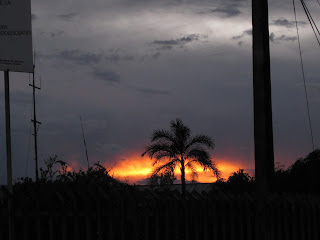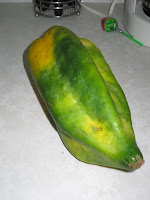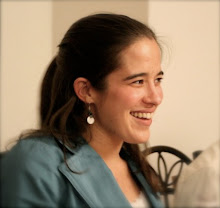Some patient encounters just stay with me.
I can still vividly remember the 40 y/o woman who casually told me as I took a sexual history during her annual gyn exam that she had been raped at age 8 and then became sexually active at age 14. She had no idea what her lifetime number of sexual partners was because, as an addict, she sold sex for the drugs that enslave her.
Another day, I was following in a specialty clinic when we saw a 75 y/o woman with her husband and daughter. It fell to the specialist to tell her that her brain cancer - despite surgery, radiation, and chemotherapy with all of their side effects - was spreading and that, without further treatment, her prognosis included decline in movements, sensation, and cognition. I contemplated what it would be like to sit for a moment in her shoes - to face the knowledge that the rest of your life will be a journey of loss, whether slowly or quickly.
The statistics say that 1/4 women and 1/6 men will experience sexual assault during their lifetimes. I've lost track of the number of women who've told me that their boyfriend or stepfather or husband raped or otherwise abused them. I silently mourned the young woman who told me last month that she had returned to her abusive boyfriend, sure again that this time would be different. Her physical exam included noting the scar on her shin from the last time they were together when he had kicked her.
My last inpatient month had one particularly heart-wrenching moment. After a difficult family meeting discussing goals of care and life expectancy with the nearly-unresponsive patient and his Asian wife in the room and an English-speaking family member on the cell phone and a translator on the Cyraphone who could half-hear the goings-on, I was standing outside the room to write the note. His wife, who cried silently during the family meeting but courageously accepted our predictions of outcome and made appropriate decisions in response, began sobbing disconsolately in the corner of the room. How alone she must feel, I thought, wishing for her only family member to whom she could talk freely who was miles away, separated from health care providers by language, and isolated from her beloved by disability now and soon by loss. Her helpless sobs still ring in my ears.
It is to this world that Jesus came as a baby 2,000 years ago as we remember this time of year. A world where her acceptance of his birth could have cost his mother her life. A world where his acceptance of God's call to take up all our sin and suffering did one day cost him his. A world where, somehow, some way, I need to hang on to the fact that the cross is not the end of the story. A world where - despite all appearances to the contrary - death and addiction and evil and shame and sorrow and loss do not have the final word (but instead resurrection does). A world where because of the tear-streaked, oh-so-human face and blood-stained, wounded flesh of Christ we never have to face suffering alone. My longing for his coming and making everything right in this season of Advent will one day be fulfilled because he did come, his first coming a down-payment on his final coming.
As Justin and Lindsey Holcomb wrote in a Christianity Today article several months ago about rape:
So now, to the pain of all of us, including those who have been raped or sexually assaulted, the gospel says, "You will be healed." To your shame, the gospel says, "You can now come to God in confidence." To your rejection, the gospel says, "You are accepted!" To your lostness, the gospel says, "You are found and I won't ever let you go." To your sin, the gospel says, "You are forgiven, and God declares you pure and righteous." To your death, the gospel says, "You were dead, but now you are alive."
May it be so. I tell these stories to remember the people myself and to remind myself that God does not forget them.
I can still vividly remember the 40 y/o woman who casually told me as I took a sexual history during her annual gyn exam that she had been raped at age 8 and then became sexually active at age 14. She had no idea what her lifetime number of sexual partners was because, as an addict, she sold sex for the drugs that enslave her.
Another day, I was following in a specialty clinic when we saw a 75 y/o woman with her husband and daughter. It fell to the specialist to tell her that her brain cancer - despite surgery, radiation, and chemotherapy with all of their side effects - was spreading and that, without further treatment, her prognosis included decline in movements, sensation, and cognition. I contemplated what it would be like to sit for a moment in her shoes - to face the knowledge that the rest of your life will be a journey of loss, whether slowly or quickly.
The statistics say that 1/4 women and 1/6 men will experience sexual assault during their lifetimes. I've lost track of the number of women who've told me that their boyfriend or stepfather or husband raped or otherwise abused them. I silently mourned the young woman who told me last month that she had returned to her abusive boyfriend, sure again that this time would be different. Her physical exam included noting the scar on her shin from the last time they were together when he had kicked her.
My last inpatient month had one particularly heart-wrenching moment. After a difficult family meeting discussing goals of care and life expectancy with the nearly-unresponsive patient and his Asian wife in the room and an English-speaking family member on the cell phone and a translator on the Cyraphone who could half-hear the goings-on, I was standing outside the room to write the note. His wife, who cried silently during the family meeting but courageously accepted our predictions of outcome and made appropriate decisions in response, began sobbing disconsolately in the corner of the room. How alone she must feel, I thought, wishing for her only family member to whom she could talk freely who was miles away, separated from health care providers by language, and isolated from her beloved by disability now and soon by loss. Her helpless sobs still ring in my ears.
It is to this world that Jesus came as a baby 2,000 years ago as we remember this time of year. A world where her acceptance of his birth could have cost his mother her life. A world where his acceptance of God's call to take up all our sin and suffering did one day cost him his. A world where, somehow, some way, I need to hang on to the fact that the cross is not the end of the story. A world where - despite all appearances to the contrary - death and addiction and evil and shame and sorrow and loss do not have the final word (but instead resurrection does). A world where because of the tear-streaked, oh-so-human face and blood-stained, wounded flesh of Christ we never have to face suffering alone. My longing for his coming and making everything right in this season of Advent will one day be fulfilled because he did come, his first coming a down-payment on his final coming.
As Justin and Lindsey Holcomb wrote in a Christianity Today article several months ago about rape:
So now, to the pain of all of us, including those who have been raped or sexually assaulted, the gospel says, "You will be healed." To your shame, the gospel says, "You can now come to God in confidence." To your rejection, the gospel says, "You are accepted!" To your lostness, the gospel says, "You are found and I won't ever let you go." To your sin, the gospel says, "You are forgiven, and God declares you pure and righteous." To your death, the gospel says, "You were dead, but now you are alive."
May it be so. I tell these stories to remember the people myself and to remind myself that God does not forget them.


















































